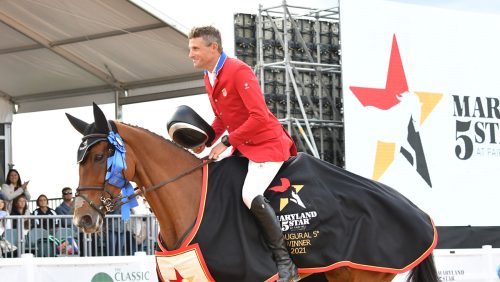The jump from beginner novice to novice is four inches. It’s the same from novice to training and training to preliminary. But as you get into the upper levels, with their increased speed and technicality, it’s only a two-inch jump from preliminary to intermediate and from intermediate to advanced.
Is the time right to add a level between training and preliminary, creating a 3’5″ division? That was the burning question at this year’s U.S. Eventing Association Annual Meeting and Convention, held in Cincinnati, Ohio, from Dec. 4-8.
“For a long time I’ve felt it’s been a big gap between training and preliminary,” said Mike Huber in his report to the Board of Governors from the Competition Calendar and Rules Committee. “From a trainer’s standpoint it’s been difficult to get a lot of horses and riders to bridge that gap. This is a four-inch gap, and you combine it with additional speed and the difficult factor; it’s quite a jump.”
Huber pointed out that 20 years ago, when he was president of the USEA (then the U.S. Combined Training Association), there was a movement to make beginner novice recognized.
“Now we can see the benefits, certainly financially, as far as bringing people into the fold and increasing entries for organizers,” he said. “With the levels that we have, it’s a fairly smooth curve, but to me there’s a little valley between training and preliminary where some horses and riders don’t get through to the other side.”
Outgoing USEA president Brian Sabo pointed out the mixed signals the BOG had received from membership. In a recent survey, riders asked for more standardization at training level. They also complained that novice and beginner novice were too difficult, discouraging people new to the sport from continuing on with it.
ADVERTISEMENT
“We have two responsibilities,” said Sabo. “One is to maintain the viability of the sport for the masses that enjoy the sport on a regular basis, and the other side is making sure we support those who are at the highest levels trying to make teams and represent our sport on an international stage.”
People trying to fast track their young horses to the international levels need courses with bigger brushes and more difficult combinations at a lower height to educate their horses.
“On the other hand, we have to make sure that those adult amateurs and kids moving up on an older horse aren’t faced with those very same fences that our upper-level riders want to see at training level,” said Sabo.
Advanced rider and BOG member Jon Holling agreed that the gap between the levels is a very real thing.
“My opinion on it originally was that we need to encourage our course designers to make training level a better preparation for preliminary and leave it at that,” he said. “But after a lot of discussion, it started making sense that we might need to explore putting in another division there.”
He joked that he’d reconciled himself to the idea by thinking of it as, “We’re going to make training level more difficult, and we’ll put in a division between novice and training that is actually what we’re doing right now [at training level].”
ADVERTISEMENT
The idea is to introduce the technicality at a height smaller than preliminary’s 3’7″, but also allow for big galloping fences with brush to prepare horses for what they’ll see at preliminary. It might even work to hybridize existing training and preliminary tracks so that organizers wouldn’t face the challenge of building an additional cross-country course.
But not everyone was strongly in favor of the idea.
“This is the first I’ve heard of it, and I may change my mind later, but my first reaction was that it was lowering the standard to meet the level of riding,” said Tremaine Cooper, who co-chairs the Course Designers Committee. “I still see a lot of training courses where there isn’t anything very big for training. If you spend enough time at training level and don’t ride all the easy trainings, but do a couple training courses that are up to standard, you should then be able to move on to prelim. You are seeing chevrons, maybe they’re eight feet wide, but they’re chevrons. You’re seeing slightly offset things.”
Cooper said the sport has gotten tougher in the last 20 years, and because preliminary is harder now, it’s appropriate to start asking more technical questions, in a forgiving way, at training.
“A lot of times people will want to do the bare minimum at the level,” he said. “They think, ‘I made it around three prelims. I’ll go intermediate.’ I’m not convinced that [another level] is necessary if people are doing their homework, and the levels are presented correctly. I think there are a lot of different factors. Make sure the courses are up to standard. Make sure the level of riding is there: You’re not just getting around at training; you’re making it look easy and then you’re ready for prelim. Don’t give them another level so they can do that by the skin of their teeth before going prelim.”
While there was lively discussion throughout the annual meeting, no rule change proposal was put forward. Huber said the plan was to come up with specifications, including things like age requirements and how this level would feature in terms of eligibility requirements, and come back with a more fleshed out proposal at a later date. Name suggestions for the new level are welcome, as no one was very keen on a pre-preliminary division!
For complete coverage from the USEA Annual Meeting, including rule change proposals, award winners and new safety technology, be sure to check out the Chronicle’s Dec. 23 print edition.















